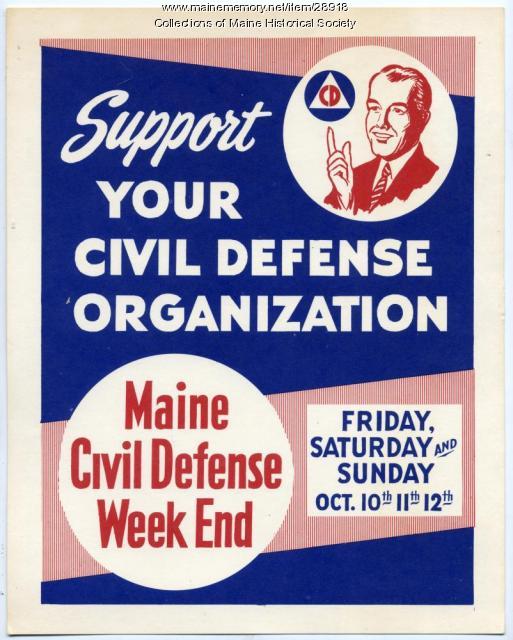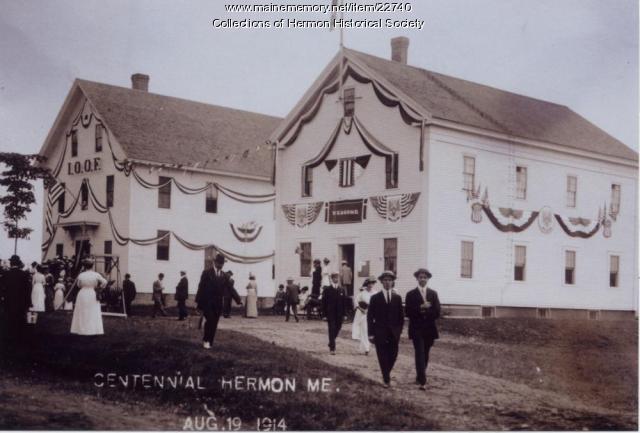Keywords: city government
Item 7395
Old City Building, Lewiston, ca. 1885
Contributed by: Lewiston Public Library Date: circa 1885 Location: Lewiston Media: Phototransparency
Item 14636
First Congregational Church, City Hall, Brewer, ca. 1910
Contributed by: City of Brewer Date: circa 1910 Location: Brewer Media: Postcard
Item 50794
Assessor's Record, 65-79 Exchange Street, Portland, 1924
Owner in 1924: U.S. Government Use: Post Office
Item 53805
Assessor's Record, 314 Fore Street, Portland, 1924
Owner in 1924: United States Government Use: Custom House
Item 150389
Adjutant General's Office, Augusta, ca. 1888
Contributed by: Maine Historical Society Date: circa 1888 Location: Augusta Client: City of Augusta Architect: George M. Coombs
Item 151190
Waterville Federal Building and Post Office, Waterville, 1974-1975
Contributed by: Maine Historical Society Date: 1974–1975 Location: Waterville Client: City of Waterville Architect: Eaton W. Tarbell
Exhibit
From Sewers to Skylines: William S. Edwards's 1887 Photo Album
William S. Edwards (1830-1918) was a civil engineer who worked for the City of Portland from 1876-1906. Serving as First Assistant to Chief Engineer William A. Goodwin, then to Commissioner George N. Fernald, Edwards was a fixture in City Hall for 30 consecutive years, proving indispensable throughout the terms of 15 Mayors of Portland, including all six of those held by James Phineas Baxter. Edwards made significant contributions to Portland, was an outstanding mapmaker and planner, and his works continue to benefit historians.
Exhibit
Civil Defense: Fear and Safety
In the 1950s and the 1960s, Maine's Civil Defense effort focused on preparedness for hurricanes, floods and other natural disasters and a more global concern, nuclear war. Civil Defense materials urged awareness, along with measures like storing food and other staple items and preparing underground or other shelters.
Site Page
Bath's Historic Downtown - Davenport Memorial and City Hall
"Many of the earlier uses of City Hall for specific organizations have been relocated to their own buildings."
Site Page
City of Portland Planning & Urban Development
View collections, facts, and contact information for this Contributing Partner.
Story
Biddeford City Hall: an in-depth tour of this iconic building
by Biddeford Cultural & Heritage Center Voices of Biddeford project
Visual tour and unique insights of Biddeford’s historical landmark
Story
Alan Casavant-providing leadership during a city's Renaissance
by Biddeford Cultural & Heritage Center Voices of Biddeford project
Evolution of Biddeford's identity through the eyes of a teacher, community servant, and mayor.
Lesson Plan
Building Community/Community Buildings
Grade Level: 6-8
Content Area: Social Studies
Where do people gather? What defines a community? What buildings allow people to congregate to celebrate, learn, debate, vote, and take part in all manner of community activities? Students will evaluate images and primary documents from throughout Maine’s history, and look at some of Maine’s earliest gathering spaces and organizations, and how many communities established themselves around certain types of buildings. Students will make connections between the community buildings of the past and the ways we express identity and create communities today.
Lesson Plan
Teddy Roosevelt, Millie, and the Elegant Ride Companion Curriculum
Grade Level: 3-5, 6-8
Content Area: Social Studies
These lesson plans were developed by Maine Historical Society for the Seashore Trolley Museum as a companion curriculum for the historical fiction YA novel "Teddy Roosevelt, Millie, and the Elegant Ride" by Jean. M. Flahive (2019). The novel tells the story of Millie Thayer, a young girl who dreams of leaving the family farm, working in the city, and fighting for women's suffrage. Millie's life begins to change when a "flying carpet" shows up in the form of an electric trolley that cuts across her farm and when a fortune-teller predicts that Millie's path will cross that of someone famous. Suddenly, Millie finds herself caught up in events that shake the nation, Maine, and her family. The lesson plans in this companion curriculum explore a variety of topics including the history of the trolley use in early 20th century Maine, farm and rural life at the turn of the century, the story of Theodore Roosevelt and his relationship with Maine, WWI, and the flu pandemic of 1918-1920.





















